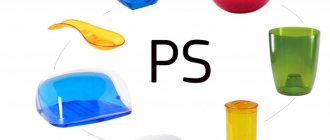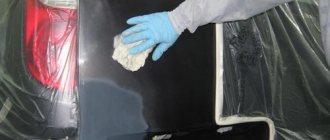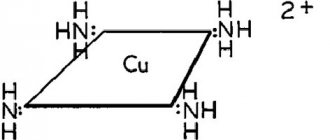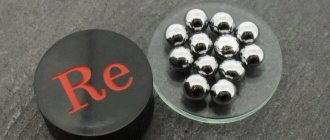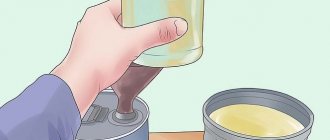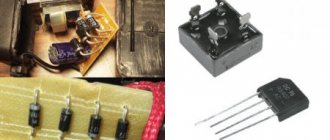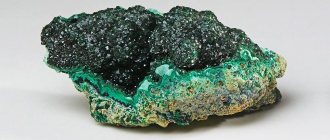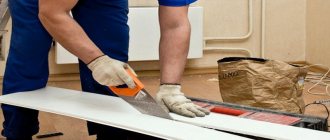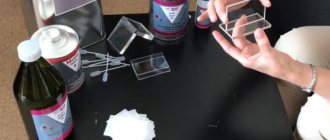Greetings!
On the pages of thematic resources, questions still often appear about how to process and glue this or that plastic. Moreover, the answers sometimes cause bewilderment. Apparently, there are a lot of myths and confusion in this matter.
In this regard, I decided to write a short educational program on basic plastics and solvents, especially since I personally smelled almost all the chemicals that will be discussed.
So, let's go!
Dichloroethane
You can hear different opinions about dichloroethane. Some say that it is very poisonous, others claim that they have worked with it without gloves all their lives. Apparently, this is due to the fact that dichloroethanes come in different varieties.
1,2-dichloroethane (ethylene chloride) is a dangerous toxin!
(second class). 1,1-dichloroethane (ethylidene chloride) is 5 times less toxic, but also far from being an air freshener (hazard class 3). Personally, I do not recommend checking for yourself which dichloroethane was sold to you.
I mention this chemical only because it is quite common and cheap and is sold in small vials, so it can help out in a critical situation when there is no more suitable option at hand. Don't forget about safety precautions!
Dichloromethane
(methylene chloride, methylene chloride)
Colorless volatile liquid with a faint odor. The best option for working with PLA. It has the same hazard class as acetone - fourth. Cheap, but difficult to obtain at retail in the provinces.
For reference:
PLA is also soluble in tetrahydrofuran and 2-methyltetrahydrofuran (hazard class 3).
Acetone
Acetone does not dissolve PLA as we need, but with prolonged contact the plastic swells, warps and softens. This can be used if the nozzle is clogged when printing PLA. When soaked in dichloromethane, plastic turns into slime, which can be difficult to clean completely.
But after soaking in acetone, the softened PLA will be removed from the nozzle in one lump, along with the blockage.
I came across opinions online that PLA dissolves in limonene and high-octane gasoline such as Galoshi. It is not true! PLA does not interact with these substances in any way.
Again, dichloroethane and dichloromethane.
Acetone
- I think it needs no introduction.
Ethyl acetate
(4th hazard class) - not as smelly as acetone (rather even aromatic). It is more convenient to work with it, because... it does not evaporate as quickly as acetone and dichloromethane, but it can be difficult to find.
Dichloroethane, dichloromethane.
Limonene
(d-limonene) is an oily liquid with a strong citrus odor. Expensive and difficult to obtain in the provinces. Compared to our other solvents, it evaporates very slowly, so it is convenient to work with, but you need to get used to it, because... it works for a long time. For example, after dipping for too long, the model will not “float” immediately.
The safest of our chemicals.
SBS (Filamentarno, Watson)
Here I will simply quote information from the Filamentarno website. Well done guys, they sorted everything out before me.
Solvent
(nefras) GOST 10214-78
It dissolves perfectly and gives T-Soft series plastics a unique transparency similar to glass. Excellent fusion and leveling of layers. After processing, the plastic does not become cloudy. Solvent treatment is recommended in a dry, well-ventilated area.
D-limonene
Slowly and gently dissolves plastic, requires longer drying with warm air (using a hairdryer). In its pure form (citrus terpene) it does not become cloudy on the product when it dries. After processing it leaves a pleasant smell of tangerines on the plastic :)
Dichloromethane
Prototyper dissolves well; when dry, the plastic becomes cloudy, acquiring the effect of foggy glass. It evaporates quickly and has virtually no odor.
Safety precautions
For all of the plastics mentioned, there are solvents with a hazard class of 4 or lower. It's better to use them. These are mostly volatile and flammable substances, so work away from fire, ventilate, read the safety rules on the label.
In Ob it costs around 600 rubles.
Polypropylene gloves are suitable to protect your hands, because... polypropylene is resistant to all our solvents (therefore you can use polypropylene containers, syringes, etc.). But you can also use ordinary household ones, just be careful. Upon contact with dichloromethane, they begin to degrade, but not very quickly.
For example, it is quite possible to wet a cloth and walk over a medium-sized model.
It seems like I haven't forgotten anything. Thank you for your attention.
In everyday life, many have encountered such a problem as broken plastic products. These items can rarely be repaired with your own hands; it is safer to seal them. You can decide how to glue plastic tightly by considering the best adhesives for various types and gluing technology.
Adhesive for plastic (click to enlarge)
Determining the type of plastic
Before gluing plastic, it is important to first determine the type of material of the broken item. This is important to do in order to better glue the plastic and not spoil the product - many adhesives are solvents for plastic parts.
Most often, the manufacturer labels its products with a recycling symbol, which can be used to determine the type of plastic. It is a triangle with drawn arrows on the edges, inside there are numbers from 1 to 7.
Another indication of a brand is the letter symbols inside or next to the triangle. Knowing these designations, you can determine the type of plastic and then the appropriate plastic adhesive for it.
Marking
1 or PET is polyethylene terephthalate. The main area of application is food packaging. It is used in the production of artificial fibers, plastic packaging for liquid food products, and films.
2 or HDPE - high-density polyethylene using low-pressure technology. Used in the production of shrink film and packaging bags.
3 or PVC - polyvinyl chloride (PVC) is used in the manufacture of linoleum and plastic windows.
Watch the video to find out more:
4 or LDPE - low-density polyethylene using high-pressure technology. Food grade plastic is used to make bags, wrappers and bottles, greenhouse film, packaging containers, toys for children, and pipes.
5 or PP - polypropylene, due to its inertness and heat resistance (it can be kept under hot steam and boiled), is widely used in the production of food packaging. The material is widely used in medicine (disposable syringes, catheters), in the production of household appliances, heat-resistant tableware and plastic pipes for hot water supply.
6 or PS - polystyrene. Disposable tableware (cups for food products) and the internal plastic lining of refrigeration devices are made from this type. By foaming polystyrene foam, a porous insulating material (foam plastic) is obtained, widely used in construction and manufacturing.
7 or O (Other) - materials that are not recyclable (combine a combination of foil, paper and polymer materials) or are not included in the previous groups.
One way to determine the brand of plastic in the absence of a sign is to test it by burning. Each material burns differently and with a different smell, from which you can determine its type.
Thermal method with glue and foil
If you need to make a circuit board or metallize another flat surface in , you can bond the plastic to the foil by heating it.
A regular oven will do the trick. To do this you will need: - a piece of plastic; - copper foil; — glue BF-2 or BF-4; - solvent; - clamps; - copper or wooden plates; - oven or iron. Take a sheet of plastic and wipe it with solvent. Also degrease the foil on the side that you will glue. Lubricate the surfaces of plastic and foil with BF-2 or BF-4 glue and leave for as long as indicated in the instructions. Place a sheet of foil over the plastic. Press down so that there are no air bubbles between the surfaces. Clamp the workpiece between pieces of wood or metal using clamps.
Place the structure in an oven preheated to approximately 100°C and leave for about 20 minutes. Turn off the oven, remove the dough and leave it to cool overnight. After that you can pay. If you don’t have an oven, you can use an iron by pressing the workpiece against it from the foil side using clamps.
You can also use soap solution or shampoo to degrease.
Marking of adhesives
In addition to plastic, glue for plastic is marked with symbols, although this designation rarely coincides with the recycling marking symbols. To know how to glue plastics together, the following letters are written on the adhesives to designate the materials being glued:
Designation for plastics (click to enlarge)
- polycarbonate - PC;
- acrylonitrile copolymer - ABS;
- polypropylene - PP;
- organic glass - PMMA;
- polyethylene - PE;
- polyvinyl chloride - PVC;
- polystyrene - PS;
- polyamide - RA 66;
- polyurethane - PUR.
Often it makes no sense to look for the markings on the glue packaging; it is enough to study the instructions in Russian, which clearly explain what types of materials the glue is intended for and how to glue the plastic.
Types of adhesives
There are many types of plastic products and they are widely used in everyday life, so gluing plastic can be done with a wide range of adhesives and different methods.
One of the gluing methods is to soften the surfaces of the parts to be glued with a suitable solvent (dichloroethane for plexiglass or polystyrene); after joining, the seam is securely soldered. In a similar way, you can make your own glue by dissolving small plastic shavings.
Types of good adhesives for plastics (click to enlarge)
Liquid
Popular household adhesives are easy to use and come in two types: solvent-based or water-based. The principle of operation of the first is as follows: water or solvent evaporates from the glue applied to the top of the plastic parts, the adhesive seam dries with further hardening, due to this the parts hold tightly.
Such adhesives can glue plastic with porous materials that allow air to pass through, otherwise the water and solvent will not evaporate and the glue will not harden.
In everyday life and industry, good liquid PVA glue is known, widely used in furniture production for reliable gluing of artificial films on wooden surfaces; in the construction field, linoleum is often glued to PVA. Other liquid adhesives are made on the basis of rubber resins, in this case the solvents are methyl acetate, alcohol, and acetone.
Contact
The name was given because of the gluing principle: before gluing plastic to plastic, the surfaces of both glued products are coated with glue and after 10 - 15 minutes they are firmly pressed against each other. There are two types: with hardener and without hardener, the best known brands are BF-2(4), “Moment”, rubber glue.
In the video you will learn how to use contact adhesives:
Adhesives contain toxic materials, so at home, before gluing plastic, it is necessary to ensure the room is ventilated.
Reaction adhesives
There are one-component and two-component types. The former, when applied to the surface to be bonded, harden very quickly from interaction with oxygen or water vapor. These types include the well-known “Secunda”, “Superglue” and other analogues that can be sealed to form a rigid and durable seam.
Two-component ones have a hardener and a fixer that are located separately from each other. Before being used for gluing, they are combined and, after being applied to the surfaces to be bonded, under the influence of environmental conditions, they gradually begin to harden and glue the parts. They are based on various resins, the most famous types being polyurethane, epoxy, and polyester.
Plastic is a universal material. It has found wide application in the manufacture of various components and parts in both industrial and household appliances. Products made from it are used in interior design of residential premises and offices.
A type of material called liquid plastic allows you to create crafts of a wide variety of shapes and sizes. This makes it possible to implement original design solutions. How to make liquid plastic at home?
How to clean different types of plastic?
White plastic is the most picky. Rust from its surface can be removed using products that have bleaching properties, for example, hydrogen peroxide is allowed.
The situation is more complicated with colored products. Incorrect use of aggressive substances will lead to stains on the plastic.
Glossy plastic panels are resistant to contact with solvents and any abrasives. To process them, it is better to use the most gentle substances, for example, lemon juice. Otherwise, the product will lose its protective film.
Materials for production
To make liquid plastic with your own hands, you need to prepare the following:
- container made of glass or metal;
- acetone;
- Styrofoam.
In this case, the amount of acetone used depends on the desired volume of the finished product.
If you want to make liquid plastic with your own hands, the recipe for its preparation will be based on dissolving polystyrene foam in acetone. For this purpose they use It is a packaging container for various household and electronic equipment.
Addendum: Other Post-Processing Techniques
It should also be noted that PLA is easily sanded with regular sandpaper. In some cases, it is quite enough to get the surface as it should be, especially if you only need to remove traces of support or similar defects. Stripping is also very useful before chemical treatment. Just sand over problem areas and especially large artifacts, and then proceed as described above. This will save both time and reagent, and the finishing will be more accurate, without significant geometric distortions.
How to make liquid plastic with your own hands
Step by step recipe
The preparation of the named material looks like this:
- Open the container with acetone and pour the liquid into the glass container so that its level from the bottom is approximately 1 cm.
- Polystyrene foam must be broken into many small pieces, each of which will be easily placed under the thickness of the solvent.
- You can make liquid plastic with your own hands by dropping each piece into a container and waiting for it to completely dissolve.
- Polystyrene foam should be added to the container until it stops melting. Then you need to wait 5-10 minutes for the unused acetone to evaporate.
- After this, a viscous mass is formed at the bottom of the container, which can be used to produce a variety of products.
Knowing how to make liquid plastic, remember that complete hardening of the mass lasts 20-30 hours. Consequently, the part being manufactured cannot be removed from the mold within this period of time.
The substance should be applied with a small rubber spatula. Movements should be smooth. Liquid plastic must be stretched over the surface to be treated. If you use it to fill cracks, it is better to use brushes with hard bristles. They need to “push” the mixture into the gaps. After the plastic has hardened, it is recommended to apply another layer of the substance.
The described product has long been sold in finished form. It only needs to be heated in a water bath or in special equipment. A hair dryer is also often used for this.
As a rule, liquid plastic is produced in dense packaging. Its terms and storage conditions are strict. The temperature in the room where it is located should not fall below 15 degrees. Otherwise, the product will lose its performance characteristics:
- viscosity;
- elasticity;
- hardness after hardening;
- practicality;
- durability.
The cost of liquid plastic is quite high. That's why it's better to do it yourself.
How to glue PLA parts?
PLA parts can also be glued with various glues, we worked well with epoxy and with Super Glue (super glue second), which is actually just ethyl cyanoacrylate.
Good luck! Safe work! Smooth printing!
Instructions
Dissolving plastics is usually carried out for gluing several parts made from the same type of plastic. These include plastics based on polyvinyl chloride, polystyrene, etc.
Use solvents. When the surfaces to be bonded are treated with a solvent, they naturally soften when a small amount of pressure is sufficient for gluing. In addition to solvents, solutions of bondable polymers can be used for this purpose.
Before joining, prepare the surface of the plastic by degreasing it and sanding it with fine sandpaper.
Apply the glue so that softening occurs over the entire working surface, to a depth that ensures a strong joint. Apply the adhesive using a syringe, brush, spray or dip method.
Press down the parts to be glued and secure them. Apply pressure on the surface until a solid adhesive layer is formed.
Recently, many new solvents have been created - no less effective than dichloroethane, but, unlike it, completely safe. By the way, such glue can be prepared by mixing plastic shavings with a solvent. To do this, pour plastic chips, shavings or pieces of ABS plastic into a metal or glass jar, mix with WD-40 solvent, in an amount about 2 cm above the plastic level. Mix everything and cover the mixture for a day, then stir it again. If the glue is thick, add solvent.
You can also prepare adhesive based on methylene chloride. This will only take 4 hours. You should know that a certain type of plastic has its own solvent. So, for example, for celluloid it is acetone, - benzene, and for organic glass - chloroform.
Helpful advice
Use caution when working with dichloroethane as it is highly toxic. The room must have good ventilation.
In industrial enterprises, plastic is most often metalized using vacuum deposition. This method is not available at home. The need to obtain metallized plastic sometimes arises, especially among those who are interested in radio electronics. There are two quite accessible methods of metallization.
Precautionary measures
Acetone is a very dangerous liquid that has an extremely negative effect on the human body. Therefore, it is allowed to make liquid plastic with your own hands only if the following precautions are strictly observed:
- Before working with acetone, you must carefully study the instructions for its use. It is indicated on the container label.
- Special sealed safety glasses should be used. They will protect your eyes in case of liquid drops and vapors. Working without them can cause serious eye injury.
- Acetone is toxic, so it should only be used in a well-ventilated area. In this case, it is necessary to use respiratory protection.
- This is a highly flammable product. Therefore, liquid plastic is made with your own hands away from sources of open fire. Smoking is strictly prohibited when performing work.
- Residues of acetone must not be poured into the sewer system.
- At the end of the process, as well as after pouring the finished plastic into molds, you must thoroughly wash your hands.
What should you not use to remove rust stains and why?
To remove rust stains from plastic, you cannot use the following products:
Abrasives and hard sponges. Together with the dirt, they will remove the top layer of plastic. Its surface will lose its former smoothness and attractiveness.- Products containing chlorine. This substance will cause discoloration of the surface.
- Substances containing wax. This treatment will cause the plastic to become sticky and collect dust.
- Aggressive compounds with hydrochloric or other acid. Such substances will cause the plastic to dissolve.
- Solvents for paint and varnish coatings. Their application to a plastic surface will cause its damage.
Anti-corrosion agent
Liquid plastic is also characterized by a high degree of adhesion to the metal surface being processed. This property of the substance began to be used in anti-corrosion treatment of steel. Liquid plastic is applied to the surface without prior priming. It dries out in a few hours. After this, a film is formed on the surface that will protect the material from rust.
a material that is highly resistant to many chemicals and fire.
PVC has relatively low frost resistance (-15 degrees).
The heat resistance index is +65 degrees.
Let us note several main advantages of the material:
1. does not dissolve in water
2. Resistant to acids, alcohols, alkaline solutions and mineral oils
3. Compatible with some plasticizers.
4. has low flammability and high resistance to oxidation
5. Easily dissolves in the following substances:
esters, ketones, hydrocarbons (both chlorinated and aromatic)
We are especially interested in the fifth point: the solubility of PVC, namely what substances can be used to do this.
Interesting!
How to glue PVC panels to liquid nails,
Below are the best products for dissolving PVC.
Option with copper sulfate - galvanic bath
To metalize the surface using this method, you will need: - BF or nitrocellulose glue;
- aluminum powder; — rectified alcohol; - sulfuric acid; — copper scrap; - car battery; - copper wire; - plastic or enamel basin; - paper clip. Mix glue with aluminum powder to the consistency of liquid sour cream. Apply a layer of the resulting substance to the surface of the plastic and let it dry.
If the glue is too thick, thin it with a little alcohol.
Dilute copper sulfate with rain or battery water (you can buy it at a farm store). Pour the solution into a dielectric glass or plastic container, or into a regular plastic basin. Attach the wire to one edge of the workpiece using a paper clip or a screw and nut. Attach the other end of the wire to the battery terminal marked with a “-” sign.
Tie scrap copper together with copper wire. Connect the wire to the second terminal of the battery. All fastenings must be above the mortar level. Turn on the current and wait until your plastic plate is covered with an even layer of red copper. This method is used for metallization of complex surfaces with arbitrary curvature. For example, in this way you can make an antenna mirror for a mobile communication device.
Plastic is an organic material based on polymers. The special properties of plastic allow it to take a certain shape under pressure and heat, and after cooling, maintain it. Sometimes processing of plastics is done using solvents. What solvent dissolves plastic? This could be solvent 646, dichloroethane.
As a rule, dissolving plastics is performed for gluing several different parts from the same material. Such materials include plastics based on polystyrene, polyvinyl chloride and others.
It is best to use solvents. During the treatment of the bonded surfaces with dichloroethane or solvent 646, natural softening occurs and very little pressure will be sufficient for gluing.
Before starting the connection, you need to prepare the plastics - degrease and sand them. The adhesive should be applied in such a way that the softening is carried out over the entire working surface and a strong joint is ensured. It is recommended to apply the adhesive using a syringe or brush, by dipping or spraying. The parts to be glued should be pressed down and secured. Pressure must be applied to both surfaces until a pronounced adhesive layer is visible.
Recently, many new types of solvents have been developed that are less dangerous than dichloroethane. It should be noted that you can prepare this kind of glue yourself by mixing solvent with plastic shavings. To do this, spray plastic shavings, chips, or pieces of ABS plastic onto a glass or metal jar and mix them with WD-40 solvent. The resulting mixture must be stirred and covered with a lid. It should sit for a day, after which it can be used.
Plastic is a universal material. It has found wide application in the manufacture of various components and parts in both industrial and household appliances. Products made from it are used in interior design of residential premises and offices.
A type of material called liquid plastic allows you to create crafts of a wide variety of shapes and sizes. This makes it possible to implement original design solutions. How to make liquid plastic at home?
Solvent for PVC
Based on the above, we conclude that ketones, ethers and hydrocarbons are ideal for dissolution.
This means that it is necessary to use products that contain one of the presented components.
There are more than enough such funds. There is no end in sight to the variety of prices and varieties. We have chosen two that meet the price-quality ratio.
TetraHydroFuran (THF) is a chemical colorless liquid substance with a characteristic ethereal odor. It has found its application in organic synthesis.
Excellent for dissolving polyvinyl chloride to a paste-like state. Can be purchased at any specialty store.
Cyclohexanone is a clear oily liquid with a distinct odor of mint and acetone.
The substance in question is a typical representative of ketones, which, based on what was written earlier, is well suited for dissolving PVC.
